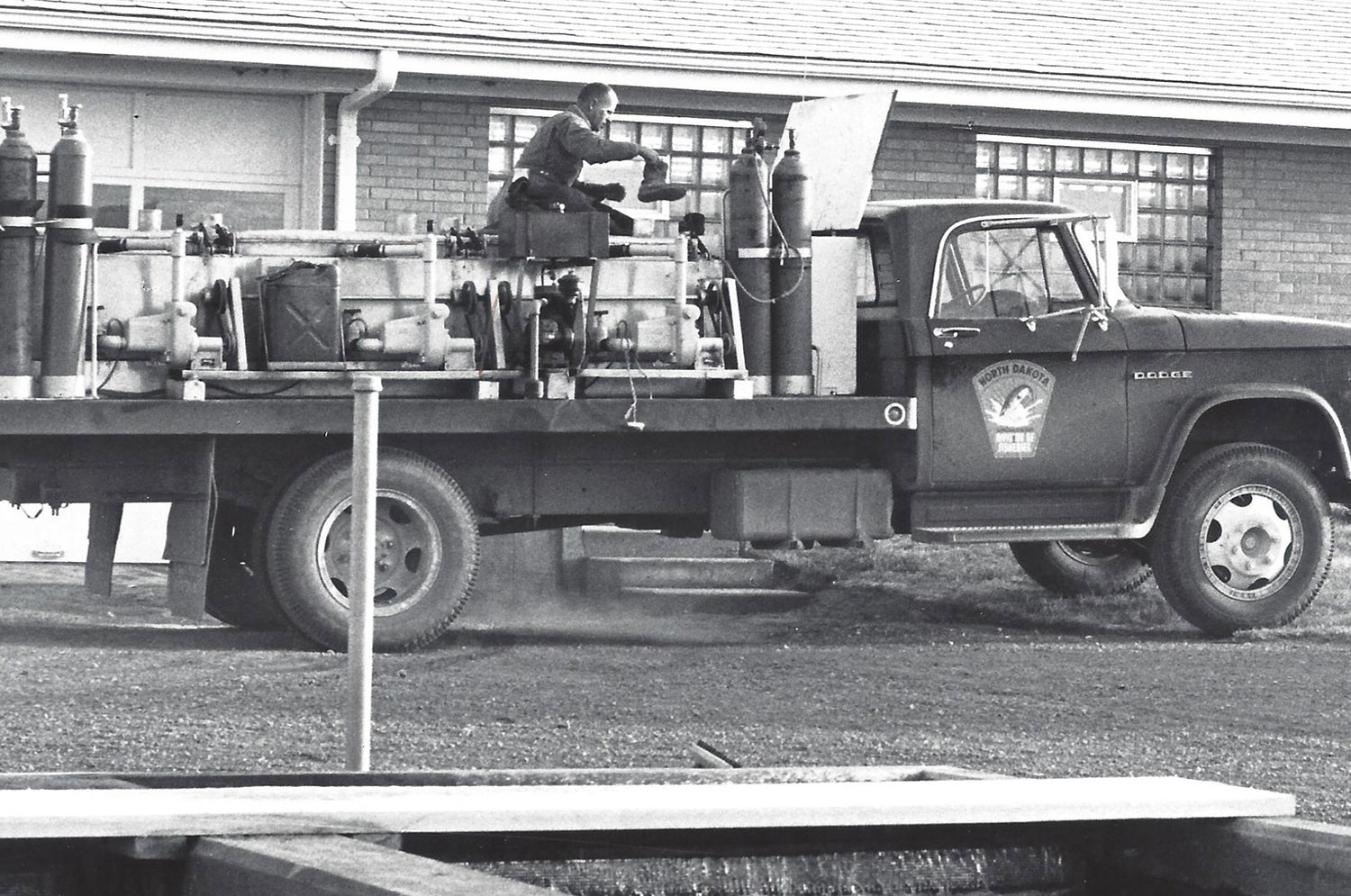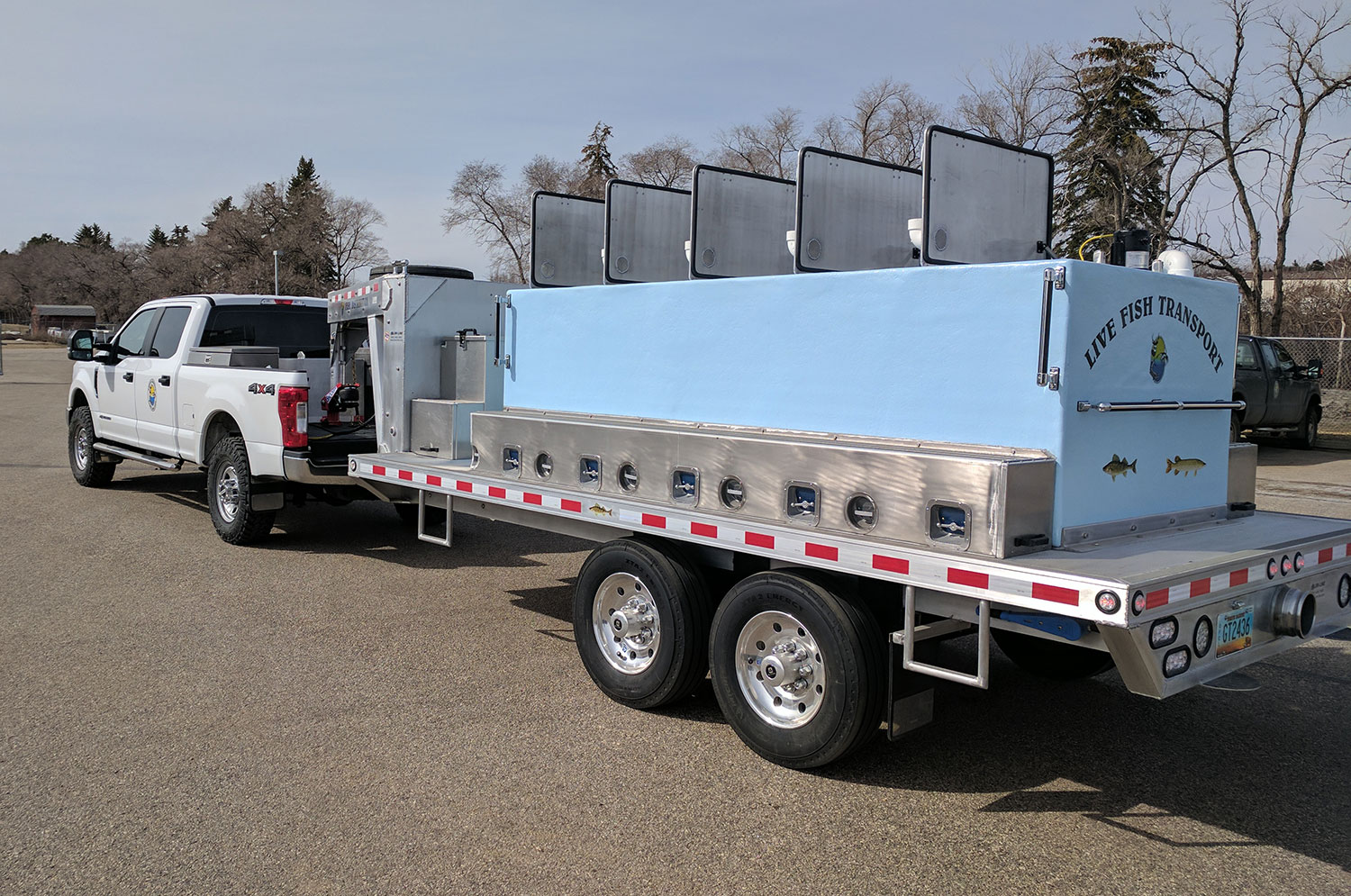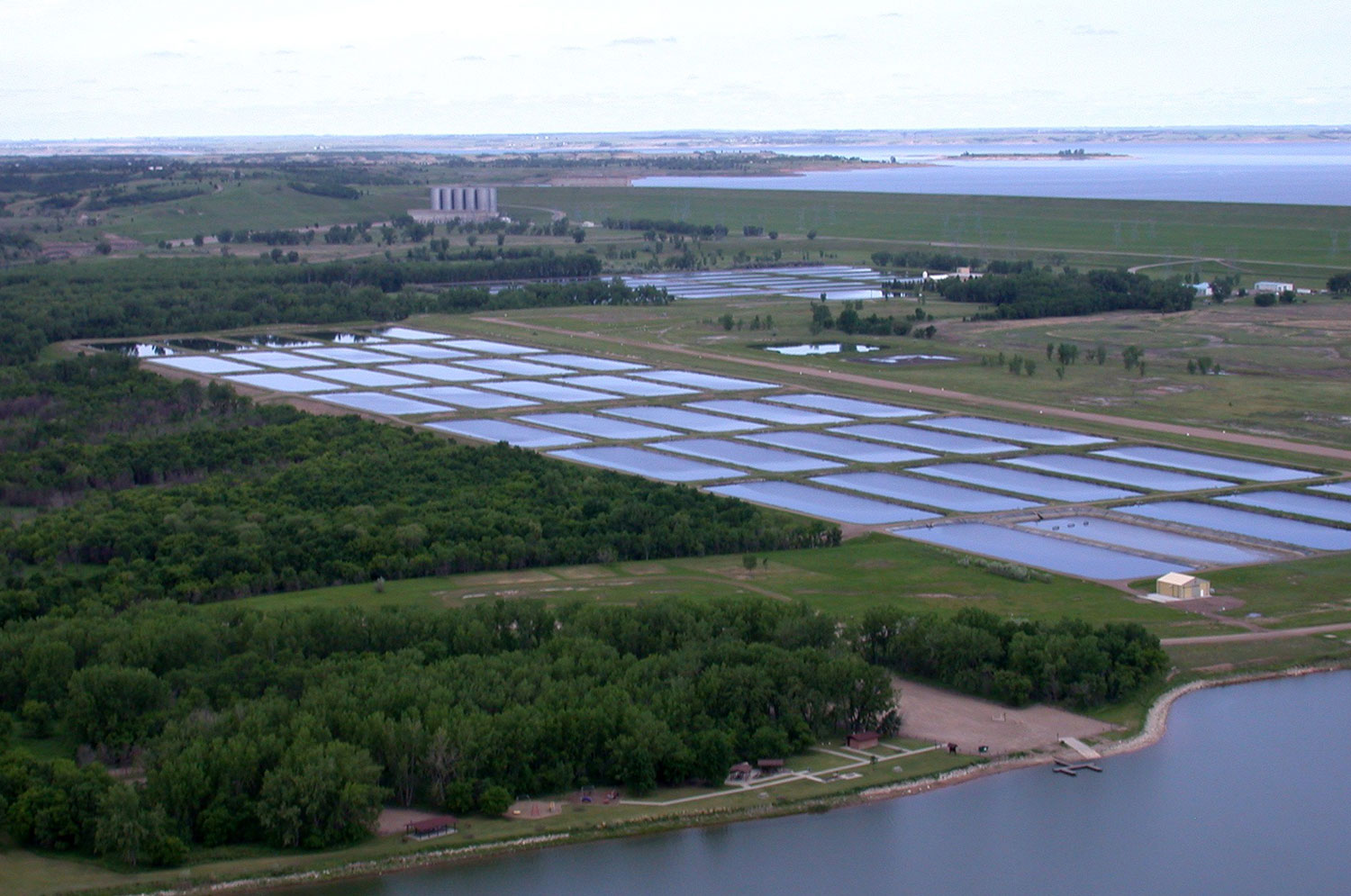
55 Years of Fish Distribution
The practice of stocking fish by authorities to create fishing opportunities in North Dakota is more than a century old. Yet, it wasn’t until the early 1960s that the Game and Fish Department established its first fleet of fish distribution units.
The timing coincided with the establishment of Garrison Dam National Fish Hatchery, with an understanding to also help with shipping fish out of the Valley City National Fish Hatchery. The tanks used to haul fish over the road were custom created around what was then called the “California design,” which was based on a shallow tank, with a quick exchange circulation system.

Dale Henegar, former fisheries biologist and director for Game and Fish, prepares to pick up a load of fish sometime in the 1960s from Garrison Dam National Fish Hatchery.
The Department had four all-aluminum tanks built by a fabricator in Cooperstown starting in 1962. Each tank, mounted on a 2.5-ton chassis, had three 160-gallon compartment tanks that could transport 1,000 pounds of trout.
From the early 1960s through 1988, on average, 5 million fingerlings of all game fish species were stocked annually in 120 waters around the state. Walleye and pike stockings averaged just under 2 million fingerlings, with around 40,000 pounds of trout and salmon stocked each year.
For the time, the three 160-gallon compartment tank setup was great, but with the 1990s approaching, Game and Fish experimented with installing the existing aluminum tanks on trailers and pulling them with pickups.
It quickly became evident that a 500-mile day with a pickup pulling a trailer was much less demanding than the same trip in a 2.5-ton truck. Plus, it eliminated the work of climbing on and off the bigger vehicle.
About the same time, a large expansion was underway at Garrison Dam National Fish Hatchery in the form of a new trout and salmon production building to address growing chinook salmon and community trout pond fisheries.
In addition, the Department funded the construction of an additional 40 acre-and-a-half cool-water ponds to increase production to adequately address larger systems in the state like Lake Sakakawea and Devils Lake.
Anticipating increased production from an additional 40 hatchery ponds, plus the new trout and salmon building, Game and Fish developed a new fleet of four fiberglass transport tanks to replace the first generation aluminum tanks that were in service for 25 years.
These tanks had two additional 160-gallon compartments, for a total size of 800 gallons, but were still mounted on trailers and pulled by heavy duty pickups. With the modern fiberglass on wood construction, the new tanks could safely transport nearly one ton of catchable trout or about a half-million walleye fingerlings per trip.

A look at the Game and Fish Department’s third generation fish transportation tanks.
The timing of having these new fish distribution units available was perfect to utilize the additional production and combined output from both federal hatcheries. Several years of increased walleye production was dedicated to Lake Sakakawea, which, at the time, was in the grips of drought and showing little if any natural reproduction.
From the first year of production from the 40 new hatchery ponds in 1989 through the early 2000s, 11 million fingerlings of all game fish species, on average, were stocked annually in 185 waters. Of those, an average of 6 million walleye and 2.6 million pike were stocked per year. Trout and salmon distribution grew to more than 55,000 pounds, with a high of 92,000 pounds some years. To transport these fish, four distribution trucks amassed about 70,000 miles during the traditional fish shipping season, which lasted less than three months.
New technologies also increased the number of waters a Game and Fish Department driver could stock, including GPS navigation to help auto-route a driver to the dozen or more lakes stocked daily. Also, real-time oxygen monitoring systems allow for maximum loading, while increasing the quality of stocked fish and greatly improving the potential for stocking success.
With the second generation fiberglass tanks starting to show signs of failure after shipping more than 190 million walleyes fingerlings over more than several hundred thousand miles, a third generation tank was designed and put into service in 2017.
Fish distribution in North Dakota the last 10 years has focused on the dramatic growth of fishing waters across the state, including about 50 new prairie walleye lakes. The annual output of fish raised at hatcheries and transported across the landscape increased to more than 12 million fingerlings.
The biggest shift, more than 9 million fingerlings per year, is seen in walleyes. Also, the average number of lakes stocked today in North Dakota is 220, which is a record.
While the Department has upgraded equipment needed to transport fish to all corners of the state and continued its financial investment in hatchery infrastructure, enough can’t be said about staff at the two federal fish hatcheries in the state.

An aerial view of the 40 hatchery ponds at Garrison Dam National Fish Hatchery.
There was a time when producing 8 million walleye fingerlings was a lofty goal, something that had never been done anywhere in the country. This year, both Valley City and Garrison Dam national fish hatcheries, each set records for walleye production. Valley City shipped a record 3 million fingerlings, the most in its 77-year history, while Garrison Dam established a new record of more than 10 million fingerlings, the most in its 54-year history.
With advances over the last decade in biological knowledge and a better understanding of when to stock fish, the annual production demand is driven not by how many fish the hatchery can raise, but rather by what the fishing waters require to achieve management objectives.
